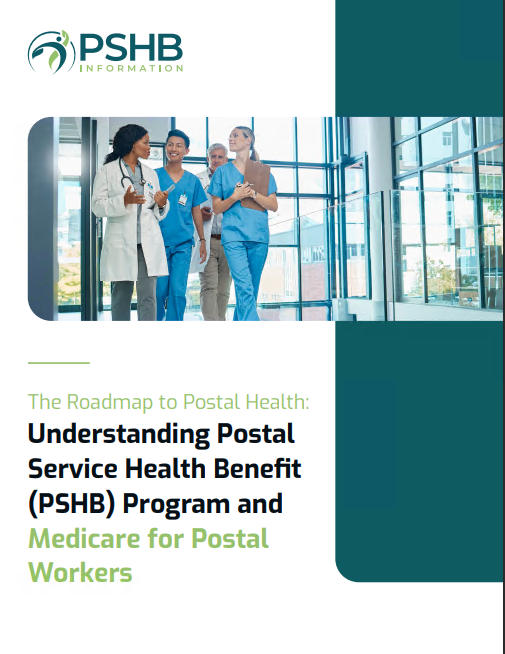Key Takeaways
-
Avoiding common Medicare enrollment mistakes can save USPS employees significant money in retirement.
-
Understanding the interaction between Medicare and your Postal Service Health Benefits (PSHB) helps ensure comprehensive and cost-effective coverage.
1. Missing the Medicare Enrollment Window
One of the most costly mistakes you can make is missing your initial Medicare enrollment period. This critical window lasts for seven months—three months before your 65th birthday, your birthday month, and three months after. If you miss this enrollment period, you could face lifelong penalties and delayed coverage.
For USPS employees and retirees, timely enrollment in Medicare Part B is essential because PSHB integrates closely with Medicare coverage. Delayed enrollment can lead to gaps in healthcare and increased out-of-pocket costs.
What You Should Do Instead: Mark your calendar clearly and begin preparing your enrollment at least three months before your 65th birthday to avoid any unpleasant surprises.
2. Ignoring Medicare Integration With PSHB
As a USPS retiree or soon-to-be retiree, you might assume your PSHB coverage is sufficient by itself. However, PSHB is specifically designed to complement Medicare coverage. Neglecting to enroll in Medicare Part B when eligible could result in significantly higher healthcare expenses.
When you enroll in both Medicare and PSHB, your deductibles, copays, and coinsurance costs often reduce substantially. This coordinated coverage typically lowers your overall healthcare expenses, saving you considerable amounts in the long run.
What You Should Do Instead: Carefully review how your specific PSHB plan coordinates with Medicare and enroll in Part B at the appropriate time to maximize your benefits.
3. Choosing Coverage Based Only on Current Health Status
Another common mistake many USPS retirees make is selecting coverage based solely on their current health. While you might feel healthy now, medical needs can change rapidly, especially in retirement. If you choose minimal coverage today, you could end up facing hefty medical bills later.
Healthcare costs in retirement typically increase due to age-related medical conditions, specialized treatments, or unexpected health issues. Being underinsured during these critical times can quickly drain your retirement savings.
What You Should Do Instead: Plan proactively. Consider coverage options that offer a good balance between premium costs and potential future healthcare needs. Opting for comprehensive coverage now can provide peace of mind later.
4. Not Reviewing Your Coverage Annually
Enrollment in Medicare and PSHB is not a “set it and forget it” task. USPS retirees sometimes forget that healthcare plans, including PSHB, may undergo annual changes affecting premiums, copayments, deductibles, and even covered medications.
If you fail to review your plan annually during the open enrollment period, typically from November to December, you might unintentionally continue with a plan that no longer fits your needs, potentially leading to increased costs and diminished benefits.
What You Should Do Instead: Each year, carefully review your Annual Notice of Change (ANOC) document sent around October. Make necessary adjustments during the annual open enrollment to ensure your coverage aligns with your evolving health needs.
5. Overlooking Prescription Drug Coverage
Many USPS employees underestimate the importance of reviewing prescription drug coverage under Medicare Part D, especially as retirement approaches. Medication costs typically increase with age, and not selecting the right coverage can lead to significant financial strain.
While PSHB provides drug coverage through Medicare Part D Employer Group Waiver Plans (EGWPs) integrated within your existing benefits, you must understand how these plans function to avoid unexpected out-of-pocket expenses. Missing critical details regarding formularies, tiers, and coverage gaps can result in costly surprises.
What You Should Do Instead: Carefully evaluate the prescription drug benefits within your PSHB plan. Review formularies and consider your current and anticipated medication needs annually to choose the most suitable coverage.
6. Assuming All Medicare and PSHB Plans Are Alike
A common misconception is believing all Medicare and PSHB plans provide similar coverage and costs. USPS retirees who fall into this trap may neglect to investigate individual plan specifics, such as out-of-pocket maximums, deductibles, copayments, and coverage networks, inadvertently choosing a plan ill-suited for their specific circumstances.
PSHB plans differ considerably, offering various benefits and cost structures tailored to different needs. Selecting a plan without proper comparison might leave you paying significantly more than necessary or facing inadequate coverage.
What You Should Do Instead: Thoroughly compare plans each enrollment season. Examine details such as networks, coinsurance rates, copayments, and maximum out-of-pocket expenses. Select the plan that best matches your health needs and financial situation.
How to Stay Ahead of Medicare Enrollment Pitfalls
Navigating Medicare enrollment alongside PSHB can feel daunting. However, staying informed about timelines, integration strategies, and coverage specifics significantly reduces your risk of costly errors.
Here’s a helpful approach:
-
Stay Informed: Regularly read official communications from Medicare and PSHB.
-
Plan Early: Start planning for Medicare enrollment at least six months ahead of your eligibility date.
-
Consult a Professional: Don’t hesitate to seek professional advice from licensed agents familiar with both Medicare and PSHB.
Get Personalized Assistance for Your Medicare and PSHB Choices
Mistakes during Medicare enrollment can be costly, but they’re also entirely avoidable with proper guidance. To ensure you’re making the right decisions tailored to your unique situation, consult with a licensed agent listed on this website. They offer valuable insights, personalized recommendations, and help you secure the coverage that best meets your needs.






